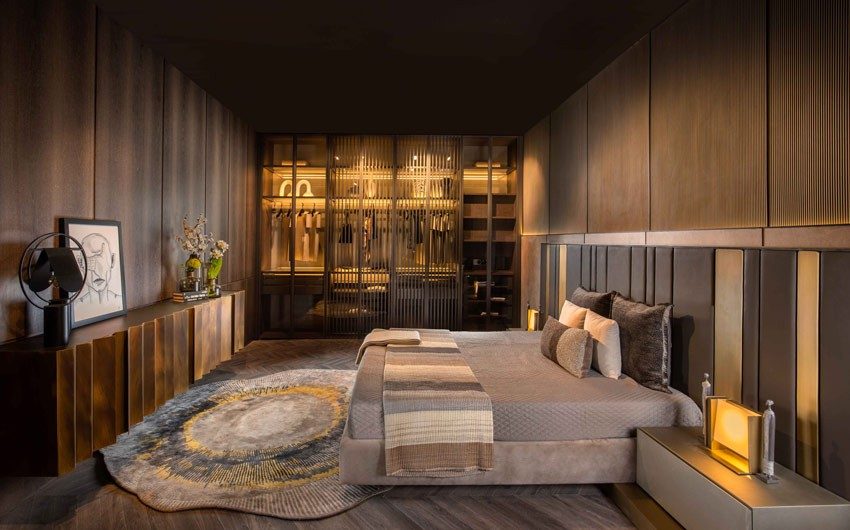
Fast action is at the heart of Wildlife photography. Wildlife action is fast and unpredictable. Most of the wildlife, including predators, are active during early dawn and late dusk. During the edge of the day, light conditions are low. Having a range of focal lengths is essential to photograph distant wildlife shots. The weather conditions are harsh in the wild. Moreover, wildlife photographers try to find a camera which is capable of capturing stunning images in every possible situation in the wild.
Nikon crafted a flagship DX-format DSLR camera – the Nikon D500, with excellent high ISO performance, a faster frame rate, and a fast and accurate focus – even in low light.
The Nikon D500 camera body weighs around 870g (30 oz) including battery and XD card. It is a crop sensor (DX format) DSLR with a 20.9 MP CMOS sensor. The ISO range is from ISO 100 to ISO 51200. This ISO range is useful in getting better image quality even in low light. In addition to high ISO performance, frame rate and autofocus performance of the Nikon D500 is excellent. Frames per second for Nikon D500 is whooping 10 FPS. The autofocus is fast and accurate in low light as well. Nikon D500 is fully capable of focussing up to f/8 with center focusing points. These key features make the Nikon D500 excellent for Wildlife and Bird photography.
This article is a field-review of Nikon D500 from the perspective of Wildlife Photographer. This review will help you in understanding how the Nikon D500 performs in the field.
Note: All the wildlife and bird images are photographed in the natural forest with uncontrolled light conditions and within their natural habitat.
Images are captured with the Nikon D500 and the Nikon 200-500 f/5.6 lens with a bean bag. Images are captured either from a safari jeep or from a safari boat.
Specifications
- Sensor and processor – DX format (23.5 mm x 15.7 mm) CMOS sensor with EXPEED 5 processor
- ISO – ISO 100 to ISO 51200 (ISO Expandable from range ISO 50 to ISO 1640000)
- AF Modes – Single Servo (AF-S), Continuous Servo (AF-C), Manual and Full-time Servo in Live View
- AF Area Modes – Single Point AF, Group Area AD, 3D Tracking, Dynamic-area AF with 25, 72 and 153 points, Auto Area AF
- Power – EN-EL 15 Lithium Ion Battery with MH-25a charger
- Storage cards – SD, SDHC, SDXC, and XQD cards. One slot for SD card and another slot for XQD card
- Dimensions and weight – Approximate weight of the body including Battery and card is 870 g (30 oz) and dimensions are (Width x Height X Depth) 5.8 in (147 mm) x 4.6 in (115 mm) x 3.2 in (81 mm)
- Frame rate (FPS: Frames per second) – 10 FPS in Continuous High Mode and for Continuous Low mode FPS Selectable from 2 to 9 FPS
- Shutter release modes – Single, Continuous Low (2-9 FPS) and Continuous High (10 FPS), Mirror Up, Self Timer and Quiet release
- Shutter speed range – Slowest shutter speed is 30 s, and Fastest shutter speed is 1/8000 s
- Metering modes – Spot metering, Center-weighted metering, and Matrix metering
- Exposure mode – Manual (M), Aperture Priority (A), Shutter Priority (S) and Programmed Auto (P)
- White Balance – Auto, Cloudy, Direct Sunlight, Flash, Fluorescent, Color Temperature (2500 k to 10000 k)
- Flash – No Built-in Flash and External Flash is required
- Image format – JPEG (Basic, Normal, Fine), NEF / RAW (12-bit or 14-bit with an option of Lose less compressed, Compressed and Uncompressed)
- Lens compatibility – Full compatibility with Nikon AF lenses with G, E, D type and DX-format lenses. Partial compatibility with PC lenses, AI-P, and Non-CPU lenses
Controls and ergonomics
Controls
Controls on the camera feel perfect for wildlife photography.
Here is why:
- Exposure selection mode – This button helps to select the exposure modes – Manual (M), Aperture Priority(A), Shutter Priority(S) and Programmed Auto (P)
- Frame rate setting – This dial helps to set the Frame rate as Single ( S), Continuous Low ( CL), Continuous High ( CH ), Timer and Mirror lockup
- ISO and exposure compensation setting – the ISO button allows you to change the ISO quickly
- Focus point selection dial – The Focus point selection dial helps select focus point
- Focus mode and Focus area mode selection – This button, along with Primary and secondary dials ( Dials used to change the shutter speed and Aperture), is used to select focus modes as Single, Continuous and Auto. The same button is used to choose focus areas such as Single, 3D, Dynamic with 25,72 and 153 focal points, Group area and Auto-area
- Metering selection button – You can select Spot, Center of Matrix metering from this button quickly. In Wildlife photography switching between Matrix and Spot metering is often required depending on the light conditions
- AF- ON button – This is one of the most useful buttons on the Nikon D500 for wildlife photography. If the bird is standing on a tree branch or takes quick flight, the AF-ON button helps to capture the image with accurate focus.
- The Nikon D500 is mostly made up of magnesium alloy, carbon fiber, and plastic
- The weight and size of the Nikon D500 are suitable for all day shooting and even hand-holding. The size of the D500 is perfect while you travel in the wilderness and it is perfectly sized while hiking and traveling in the safari vehicle.
- Body toughness of the Nikon D500 is decent but not great as that of Nikon D5. I find the durability of earlier versions, such as Nikon D200, D300 or D700 was better than D500. However, the build quality of Nikon D500 feels slightly better than the Nikon D7100 or the Nikon D7200 but up to the standard of flagship DX body.
- Protection against dust and water splash is decent enough
- I have used Nikon D500 in moderately dusty environments and medium drizzle. The camera performs fine. In fact, I clean the camera after a photoshoot in the rain or heavy dust and I recommend you do so too. This type of weather sealing may be sufficient for mild dust and water splashes, but it doesn’t look good enough in extreme weather.
- Ergonomically, the Nikon D500 feels just right. Important command dials for wildlife and bird photography are located on the camera body itself. This helps you to change the settings quickly.
- Hand-holding, the Nikon D500, feels better. One caveat is the video recording button is located a bit oddly. Despite using it multiple times, I still get confused in locating the video recording button. Apart from the video recording button, you will find the buttons and dials are at the right place with the correct size.
Build quality and weather sealing
E
Controls
Controls on the camera feel perfect for wildlife photography.
Here is why:
- Exposure selection mode – This button helps to select the exposure modes – Manual (M), Aperture Priority(A), Shutter Priority(S) and Programmed Auto (P)
- Frame rate setting – This dial helps to set the Frame rate as Single ( S), Continuous Low ( CL), Continuous High ( CH ), Timer and Mirror lockup
- ISO and exposure compensation setting – the ISO button allows you to change the ISO quickly
- Focus point selection dial – The Focus point selection dial helps select focus point
- Focus mode and Focus area mode selection – This button, along with Primary and secondary dials ( Dials used to change the shutter speed and Aperture), is used to select focus modes as Single, Continuous and Auto. The same button is used to choose focus areas such as Single, 3D, Dynamic with 25,72 and 153 focal points, Group area and Auto-area
- Metering selection button – You can select Spot, Center of Matrix metering from this button quickly. In Wildlife photography switching between Matrix and Spot metering is often required depending on the light conditions
- AF- ON button – This is one of the most useful buttons on the Nikon D500 for wildlife photography. If the bird is standing on a tree branch or takes quick flight, the AF-ON button helps to capture the image with accurate focus.
- The Nikon D500 is mostly made up of magnesium alloy, carbon fiber, and plastic
- The weight and size of the Nikon D500 are suitable for all day shooting and even hand-holding. The size of the D500 is perfect while you travel in the wilderness and it is perfectly sized while hiking and traveling in the safari vehicle.
- Body toughness of the Nikon D500 is decent but not great as that of Nikon D5. I find the durability of earlier versions, such as Nikon D200, D300 or D700 was better than D500. However, the build quality of Nikon D500 feels slightly better than the Nikon D7100 or the Nikon D7200 but up to the standard of flagship DX body.
- Protection against dust and water splash is decent enough
- I have used Nikon D500 in moderately dusty environments and medium drizzle. The camera performs fine. In fact, I clean the camera after a photoshoot in the rain or heavy dust and I recommend you do so too. This type of weather sealing may be sufficient for mild dust and water splashes, but it doesn’t look good enough in extreme weather.
- Ergonomically, the Nikon D500 feels just right. Important command dials for wildlife and bird photography are located on the camera body itself. This helps you to change the settings quickly.
- Hand-holding, the Nikon D500, feels better. One caveat is the video recording button is located a bit oddly. Despite using it multiple times, I still get confused in locating the video recording button. Apart from the video recording button, you will find the buttons and dials are at the right place with the correct size.
Controls and ergonomics
Controls
Controls on the camera feel perfect for wildlife photography.
Here is why:
- Exposure selection mode – This button helps to select the exposure modes – Manual (M), Aperture Priority(A), Shutter Priority(S) and Programmed Auto (P)
- Frame rate setting – This dial helps to set the Frame rate as Single ( S), Continuous Low ( CL), Continuous High ( CH ), Timer and Mirror lockup
- ISO and exposure compensation setting – the ISO button allows you to change the ISO quickly
- Focus point selection dial – The Focus point selection dial helps select focus point
- Focus mode and Focus area mode selection – This button, along with Primary and secondary dials ( Dials used to change the shutter speed and Aperture), is used to select focus modes as Single, Continuous and Auto. The same button is used to choose focus areas such as Single, 3D, Dynamic with 25,72 and 153 focal points, Group area and Auto-area
- Metering selection button – You can select Spot, Center of Matrix metering from this button quickly. In Wildlife photography switching between Matrix and Spot metering is often required depending on the light conditions
- AF- ON button – This is one of the most useful buttons on the Nikon D500 for wildlife photography. If the bird is standing on a tree branch or takes quick flight, the AF-ON button helps to capture the image with accurate focus.
Build quality and weather sealing
- The Nikon D500 is mostly made up of magnesium alloy, carbon fiber, and plastic
- The weight and size of the Nikon D500 are suitable for all day shooting and even hand-holding. The size of the D500 is perfect while you travel in the wilderness and it is perfectly sized while hiking and traveling in the safari vehicle.
- Body toughness of the Nikon D500 is decent but not great as that of Nikon D5. I find the durability of earlier versions, such as Nikon D200, D300 or D700 was better than D500. However, the build quality of Nikon D500 feels slightly better than the Nikon D7100 or the Nikon D7200 but up to the standard of flagship DX body.
- Protection against dust and water splash is decent enough
- I have used Nikon D500 in moderately dusty environments and medium drizzle. The camera performs fine. In fact, I clean the camera after a photoshoot in the rain or heavy dust and I recommend you do so too. This type of weather sealing may be sufficient for mild dust and water splashes, but it doesn’t look good enough in extreme weather.
Ergonomics and handling
- Ergonomically, the Nikon D500 feels just right. Important command dials for wildlife and bird photography are located on the camera body itself. This helps you to change the settings quickly.
- Hand-holding, the Nikon D500, feels better. One caveat is the video recording button is located a bit oddly. Despite using it multiple times, I still get confused in locating the video recording button. Apart from the video recording button, you will find the buttons and dials are at the right place with the correct size.
Camera performance from the perspective of Nature and Wildlife photographer
Autofocus performance
Bird action happens fast and can be erratic. Wildlife movement is also fast as it occurs at dawn or dusk. The ability of the camera to focus fast and accurate is a must. With the Multi-Cam 20K Autofocus Sensor module, Nikon D500’s autofocus capabilities are excellent. The Nikon D500 focuses accurately (provided you choose the appropriate focus mode and focus area mode).
back button autofocus for focusing. There is a dedicated button for back button autofocus, which is AF-ON.
The Nikon D500 focusses extremely well in following conditions:
- Daylight
- Cloudy and rainy weather
- Low light
- Distant objects
- In the forest clutter and forest canopy
- Dusty and snowy weather
- Birds in flight and animals in action
In terms of autofocus performance, the Nikon D500 is an absolute winner.
The auto white balance of the Nikon D500 is accurate. The camera produces white balance without any shift in color or tint. All the color temperatures look right.
Other than Auto White balance, there are different white balances available such as Daylight and Shade. All produce good results.
For wildlife and bird photography, I recommend you choose Auto White Balance. It will help to reproduce the correct white balance for your images. If you want to add creative effects, you can always tune the raw image in post-processing


















